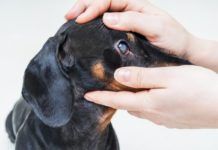We go to great lengths to ensure our dogs’ safety. We leash them, fence them, keep them indoors or close to our sides. Yet accidents happen. A door doesn’t close tightly. The meter reader leaves the gate open. A section of fence falls down in a windstorm, flood, or earthquake. We’re in a car accident and our dog panics, jumps through the broken windshield, and runs off. While safe, appropriate confinement is a critical first-line defense against pet loss, proper identification is your lost dog’s “ticket” home when the first line fails. It’s one of the most caring things you should do when you acquire your new pet.
No animal shelter monitoring organization tracks national statistics about lost pets, but of the eight to ten million animals coming into shelters every year, only 15 to 30 percent of dogs are reclaimed, according to Betsy McFarland, program director for animal sheltering issues at the Humane Society of the United States (HSUS) in Washington, D.C. “You may be the best dog owner on the planet, but if someone leaves your gate open, it can happen,” she says.
The American Society for the Prevention of Cruelty to Animals (ASPCA) estimates that about half the animals taken in by shelters are relinquished by their owners, and the other half are picked up by animal control.
Proactive recovery efforts can determine whether you’ll recover your dog—or if you will find yourself in the terrible, hearbreaking position of never knowing what happened to your missing dog.
To learn more about providing proper identification for your dog’s safety, purchase Dog Care & Nutrition from Tufts Good Dog Library of Your Dog.




